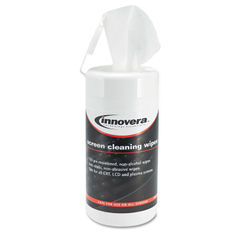Whether you’re working from home or heading back to your office after a few months of safer-at-home measures, you’re likely quite concerned with keeping your workspace clean and disinfected. These are stressful times for all people, but with some foresight and proper disinfecting techniques, you can make sure that you and your co-workers are cutting down on the spread of COVID-19.
Here is a helpful guide on how to disinfect the office, from cleaning your desk to moving freely throughout the larger office without spreading germs. We’ll include smart disinfecting techniques as well as recommended products to use to keep your office safe.
Keep Yourself Safe with Masks and Disposable Gloves
Before tackling your office, you’ll want to properly protect yourself from the spread of germs. This means wearing a mask before entering your office, even if no other people are present. You’ll also want to invest in a supply of disposable gloves to wear while cleaning so that you can safely touch surfaces in common areas. Choose gloves in the proper size for your hands to avoid slippage, and make sure to wear disposable latex, vinyl or nitrile gloves that you can safely dispose of after cleaning. If you’re uncertain about choosing the right disposable gloves, check out our Disposable Gloves Size Chart & Buying Guide.
Disinfect Your Hands Throughout the Day

In addition to cleaning your office and wearing masks and gloves, you’ll also want to clean your own hands to cut down on the spread of germs. Each time you come into your office from outside, use the restroom, interact with a co-worker or touch a shared item or surface, simply wash your hands or clean them with a waterless hand sanitizer. Similar to disinfectant wipes, you’ll want to store a few bottles of hand sanitizer around the office in large containers to ensure that everyone is able to sanitize their hands as much as possible.
Cleaning Office Areas with Soap and Water

Before using heavy disinfectants, you’ll want to wash all surfaces (such as your desk, doors, walls and common areas, such as the kitchen) with soap and water. This removes dirt and impurities on the surfaces within your office, as well as reducing the number of germs that may exist there currently. Use a general, all-purpose cleaner in a bucket of warm water, then gently but thoroughly wipe surfaces with a clean rag.
Disinfect Surfaces with a Heavy-Duty Disinfectant

Next, once your office is clean and free of dirt and dust, go back through and disinfect all surfaces with a multi-purpose disinfectant, such as Clorox or Seventh Generation. This will kill all remaining germs now that the surface is clean.
Routinely Clean Frequently Touched Surfaces
Surfaces like your laptop keyboard, computer mouse and cell phone, plus common use items like doorknobs and bathroom faucets, should be routinely cleaned to ensure that you don’t pick up any germs or pass any to your co-workers. For this type of routine disinfecting, we recommend using multipurpose disinfectant wipes, which are easy to carry with you and use on a wide variety of surfaces. Simply display a few containers of disinfectant wipes throughout the office so that you can easily grab one each time you touch a doorknob or use the restroom. With these tips for how to disinfect office spaces in mind and posted around your workspace, you’ll help keep you and your team safe.




 Laptop screen covered in dust and finger prints? We have some tips on how to clean a laptop screen. First things first: don’t use ammonia-based glass cleaners such as Windex to clean your laptop screen. Ammonia can damage modern LCD screens. Your best bet is to use wet wipes specifically formulated for use on computer screens. The advantage of
Laptop screen covered in dust and finger prints? We have some tips on how to clean a laptop screen. First things first: don’t use ammonia-based glass cleaners such as Windex to clean your laptop screen. Ammonia can damage modern LCD screens. Your best bet is to use wet wipes specifically formulated for use on computer screens. The advantage of 


 A messy office
A messy office 

